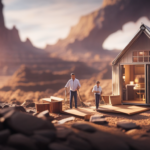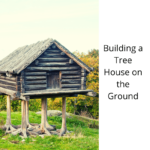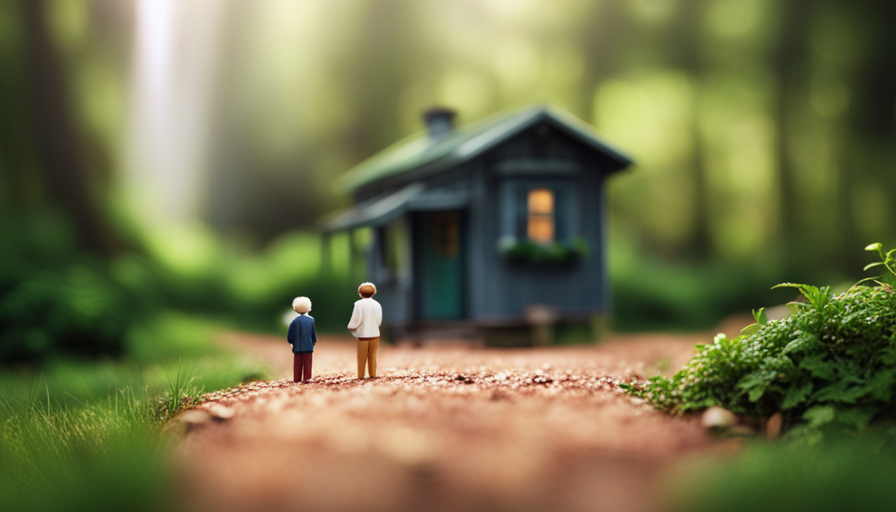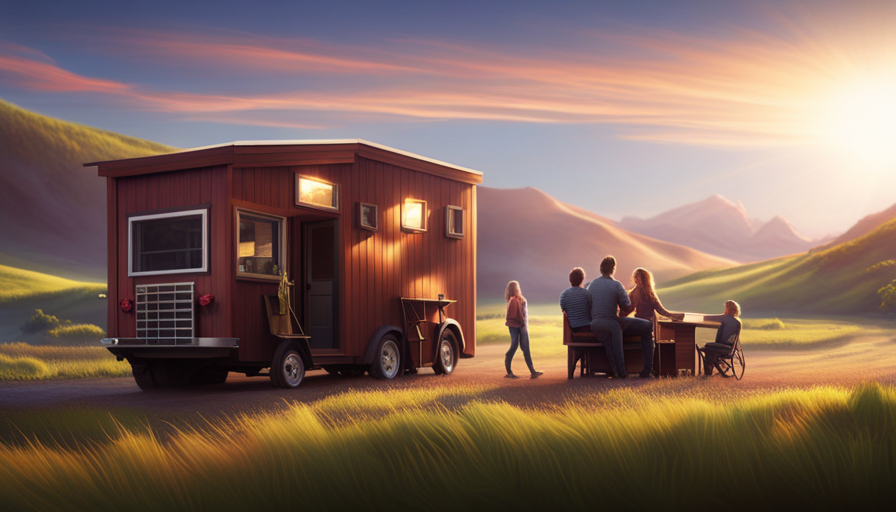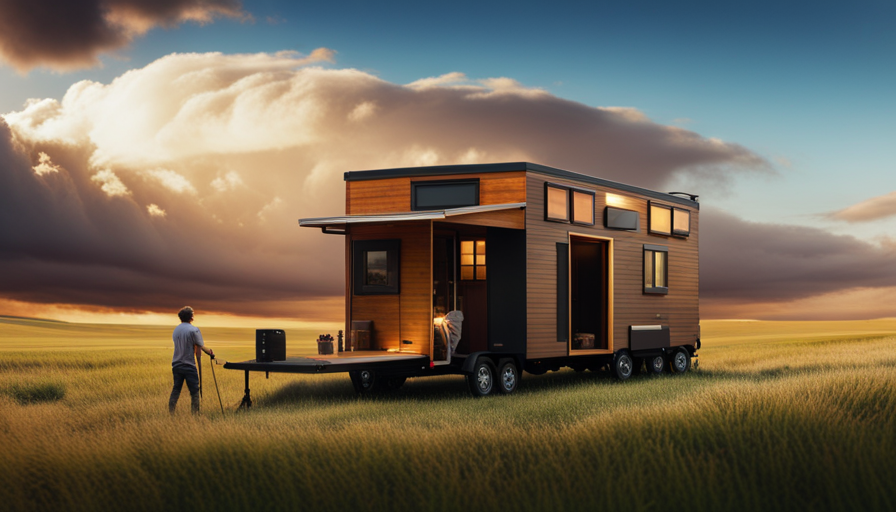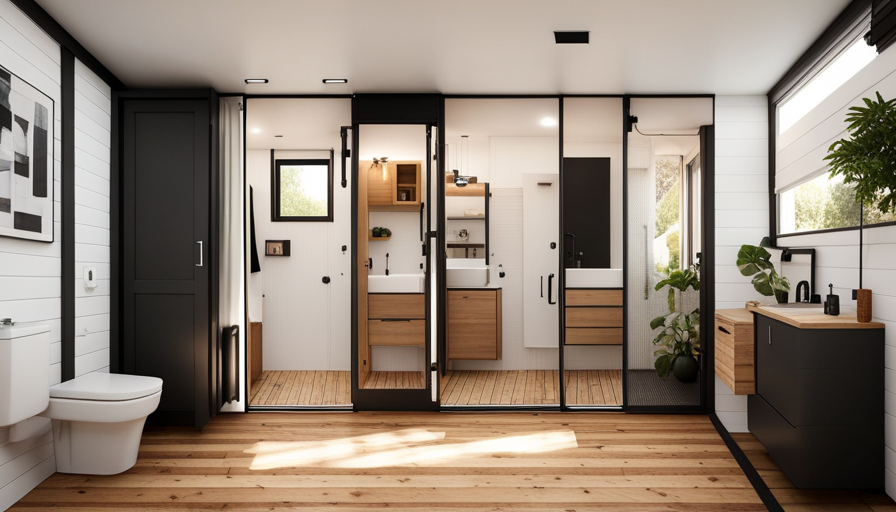DIY Projects
DIY Miniature House Tips
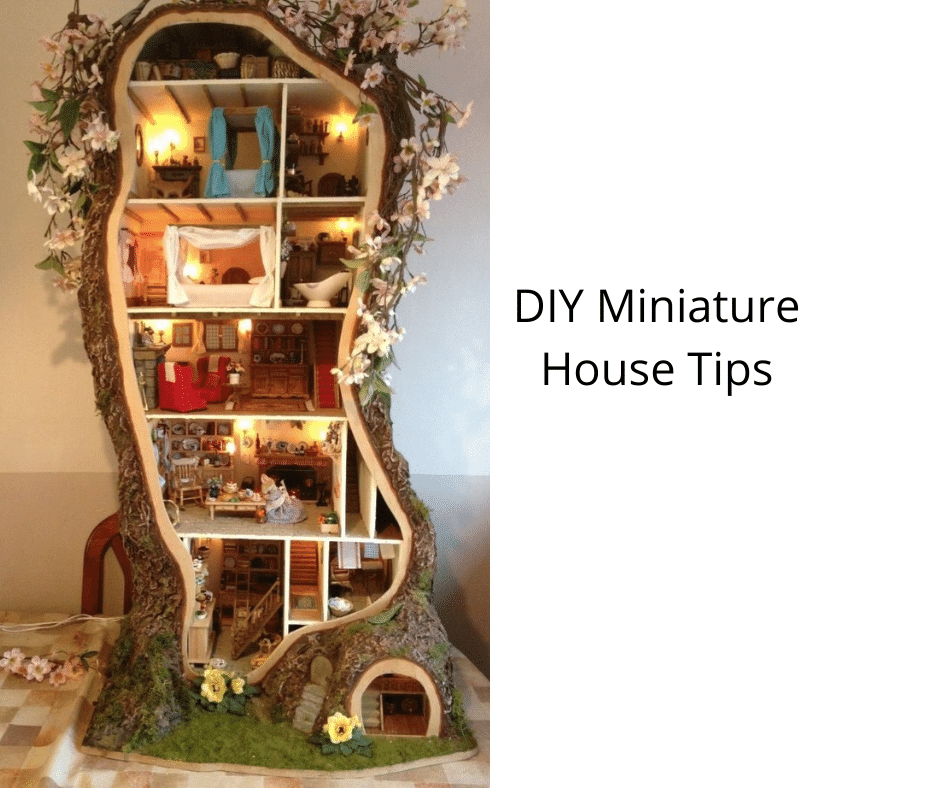
Constructing a mini house requires careful attention to avoid errors. It’s important to aim for a design that is uncomplicated, featuring a flat silhouette, a single roof pitch, and no more than two chambers. Employing shadow boxes or room boxes effectively allows for the crafting of diverse settings. A useful advice is to maintain simplicity in your house design, ensuring it’s maneuverable. Consider utilizing a box to represent the rooftop and a room box for the sides.
Building a Miniature House
You can purchase a kit if you are interested in constructing a miniature house. These kits consist of wood tongue and groove construction components that you can assemble with glue and simple craft tools. These kits also include prefinished window and door units. To begin constructing your miniature house, measure the length and width of your roof, then cut the pieces accordingly. Then, you can cover them with wallpaper or tack paper. Once the siding is complete, you can add interior and exterior decorations to the house.
Building a house is not easy, as you probably know. Nevertheless, you can always build a miniature house for your garden for a fraction of the cost. For the roof, you can use river stones, which are free and easily available. The other materials, such as wood, do not cost a fortune. You can even build a whole house for less than $100, including materials for the walls, roof, and interior decor.
After surfacing and decorating, you can start adding interior furnishings and artifacts. Once you have completed the interior, you can apply house wrap to the exterior. You should also plan the roof sheathing and framing so that you do not exceed 13.5 feet in height. Finally, you should consider the exterior finishing materials and the installation of doors and windows. Make sure to purchase locks for the doors and windows. If you are making a tiny house for a child, you should ensure that the door is secure.
Besides plywood, you can also use foam core. This material is lightweight and easy to work with without woodworking tools. You can add interior walls and doors using foam core instead of wood. You can also add architectural features or prebuilt windows and doors. Depending on your needs, you can change the whole look of the miniature house by adding or removing interior walls. Fortunately, there are many ways to customize the look of your miniature house.
The first step in the process is choosing a miniature house kit. Once you’ve chosen the model, you’ll need to buy materials and plans. If you don’t have any experience building miniatures, you can consult a specialist in the field to find plans and materials. For the most part, the kit should contain everything you need to construct your miniature house. In addition to the materials, you will need pliers and glue.
Avoiding Making Mistakes
There are numerous mistakes to avoid when building a miniature house, both during the construction process and in the decorating process. Although there are no laws stipulating that a miniature house should be built according to the manufacturer’s instructions, mistakes are still possible if you’re not careful. Known as kit-bashing, these mistakes include leaving out elements, adding new ones, or re-positioning the layout of components.
Painting a Miniature House
When you’re ready to start painting your miniature house, there are a few things you need to do first. First, make sure the miniature is clean and degreased. You can clean a miniature with lukewarm water and dish soap and then pat it dry. If the model is plastic, you may also want to clean the mold lines with a craft knife or a file. In addition, be sure to follow the paint instructions carefully. Once the miniature is clean, you’ll need to apply the paint. A blow dryer can be useful for drying the paint between coats, and a sealer can be used for immaculate conditions. If your miniature contains metal or plastic pieces, you should prepare them first for painting.
Next, you’ll want to apply the wash. This step involves applying a lighter shade of the base color. This step helps to create depth and makes it easier to see fine details. This step can also bring back a bright color or light detail. While the base color will stay darker, the details will pop. The final step is highlighting. You can apply a lighter shade of the base color on top of the base one to give the model more depth.
You can also opt for a more realistic look by using a different color for each part of the house. For example, you can use a dark blue color for the roof. Then, paint the spindles using a tiny brush. If you’re painting metal, you can use this method as well. A piece of carpet tape can help you apply the paint on a metal miniature. This way, you can achieve a high gloss finish for your miniature house.
After the base color has been applied, you can start working on the details. The highlights will be applied using a fine brush. You should leave the shadow areas free to give them a darker color. For the walls, you can apply a lighter shade in these areas. A little white mixed with green color will highlight the shadows. And you’ll also want to add some highlights with a small brush. These techniques are the most important when painting a miniature house.
Furnishing a Miniature House
You’ll need furniture, decorations, and more to create a realistic-looking miniature house. Many miniature-house collectors collect individual pieces of furniture. Some choose to create living rooms, dining rooms, bedroom settings, and other areas. They will display these settings on shelves or special display stands. Many of these miniature homes are quite realistic, with everything you’d find in a real household, including plush sofas, accent chairs, chandeliers, and kitchen sinks and bathtubs. You can also find bowls of fruit and other items.
The most important factor when choosing furnishings for your miniature house is to think about the lifestyle and social class of the people who will be living there. For example, building a country farmhouse, you’ll want to choose pieces representing traditional country furniture. Conversely, if you’re building a modern house, you can select furniture inspired by the lifestyle of the rich. You can find Le Corbusier chairs and streamlined sofas, and you can even use expensive wall art.
Depending on your desired look, you can choose various wood for miniature furniture. Basswood is a popular choice, but you can also use other types of wood to create the look you’re going for. Basswood is also readily available in North America, and you can also find European equivalents in Obeche, Jelutong, lime, and linden. Some pieces of furniture are made from hardwood veneer strips. These pieces can be painted or finished with regular acrylic paints or wood furniture finishes. You can also remake ordinary purchased miniature furniture.
I’m Theodore, and I love tiny houses. In fact, I’m the author of Tiny House 43, a book about tiny houses that are also tree houses. I think they’re magical places where imaginations can run wild and adventures are just waiting to happen.
While tree houses are often associated with childhood, they can be the perfect adult retreat. They offer a cozy space to relax and unwind, surrounded by nature. And since they’re typically built on stilts or raised platforms, they offer stunning views that traditional homes simply can’t match.
If you’re looking for a unique and romantic getaway, a tree house tiny house might just be the perfect option.
DIY Projects
Loft Net
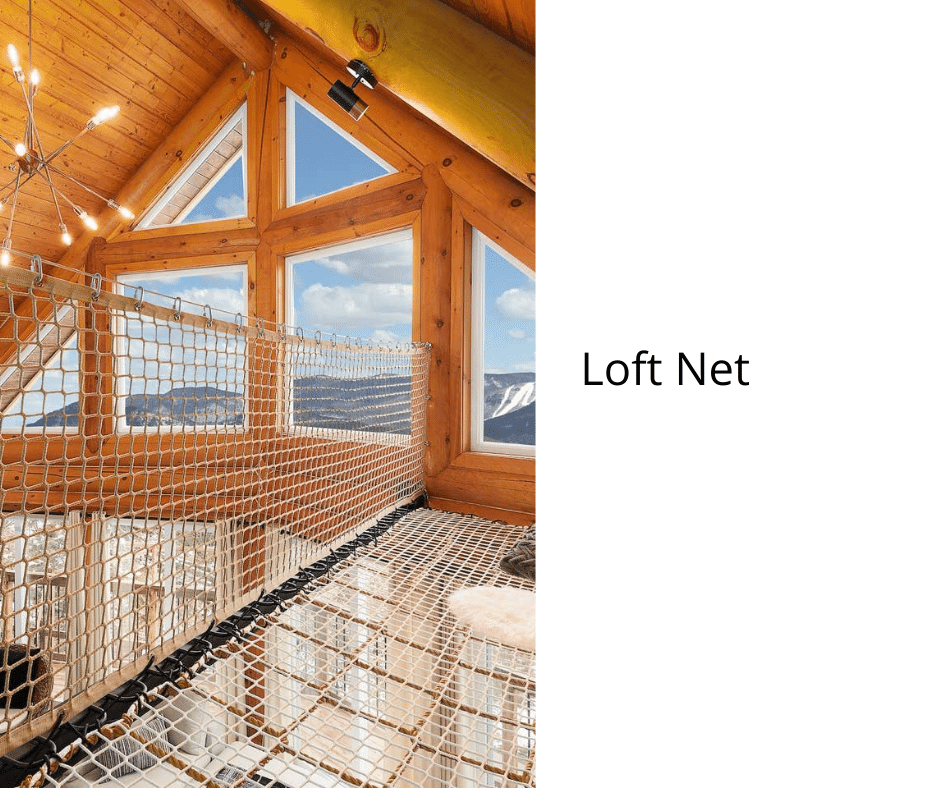
A bespoke netting solution for Aubrin’s loft is an ideal method to prevent falls. It’s simple to set up and customizable to any loft width. Moreover, it prevents Aubrin from slipping through any significant gaps. This article highlights the attributes of tailored loft netting, such as options for materials, ways to attach it, and safety measures to consider. By the end of this article, selecting the ideal net for your kid’s room will be a breeze.
[affiliatable id=’112223′]
InCord Custom Netting
InCord custom loft netting is an innovative extension of your home that adds style and comfort. This unique netting is easily installed indoors or outdoors and can take advantage of existing structural components. You can choose from several attachment options, including stainless steel eyebolts, shackles, and screws. You can also talk with an InCord expert to decide on the best material for your needs.
Made-to-measure loft safety netting offers a range of colors and sizes. The net is weight and surface area calculated automatically. The net also features a 7-mm border mesh and an additional rope sewn/linked to the border mesh. The border mesh provides a clean outer edge on all sides and stable anchoring points. The border mesh matches the color of the net for a seamless look.

Fabric options
Loft safety nets are made to measure and come in various colors and sizes. Their thickness and border are automatically calculated based on the surface area, so you can choose a net that suits your needs. The net is thick, with a 7 mm border that features additional rope sewn/linked to the mesh for added stability. The border is the same color as the net. It provides a clean outer edge and can be customized to match your decor and preferences.
Safety precautions
You’ll want to take a few precautions when installing a loft net to keep your child and other users safe. For example, you should check that the net is made of the right material. If it’s made from steel, you should avoid drilling into it, but if it’s made of concrete, it’s okay to use it on the wall. In either case, you need to ensure that the net can hold up the load without tearing or damaging the concrete.
Another great advantage of a loft net is that it makes the room feel open and spacious. Your kids can play safely, while you can see them from a safe distance. In addition to loft beds, nets are perfect for landings, galleries, and staircases. Be sure that you choose a loft bed net that is custom made, and that you contact a netstore staff member if you have any questions about the safety features of your chosen net.
Hi, I’m Emma. I’m the Editor in Chief of Tiny House 43, a blog all about tiny houses. While tree houses are often associated with childhood, they can be the perfect adult retreat. They offer a cozy space to relax and unwind, surrounded by nature. And since they’re typically built on stilts or raised platforms, they offer stunning views that traditional homes simply can’t match. If you’re looking for a unique and romantic getaway, a tree house tiny house might just be the perfect option.
DIY Projects
How Cheap Is It to Build a Tiny House
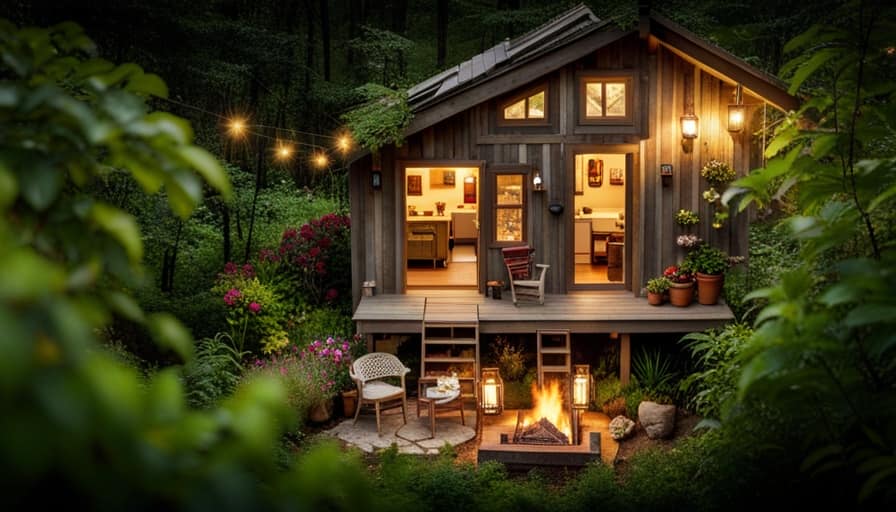
Hey there!
Did you know that building a tiny house can be more affordable than you might think? In fact, you can save a significant amount of money by using budget-friendly building materials and taking the DIY approach.
In this article, I’ll break down the costs of building a tiny house and share some creative cost-cutting strategies to help you build your dream home on a shoestring budget.
Let’s dive in and explore just how cheap it can be to build a tiny house!

Key Takeaways
- Construction, materials, and permits are the main expense categories to consider when building a tiny house.
- Utilizing cost-effective building materials, such as recycled or reclaimed materials, can help save money without compromising quality.
- DIY projects may initially seem more affordable, but hiring professionals ensures a higher level of craftsmanship and efficiency.
- Hidden expenses, such as permit costs, utility connections, specialized tools, and unforeseen repairs, should be considered and budgeted for during the planning phase.
Understanding the Costs: Breaking Down the Expenses of Building a Tiny House
I can break down the expenses of building a tiny house into three main categories: construction, materials, and permits.
When it comes to construction, it’s important to consider the cost of labor, as well as any specialized skills required for building a tiny house.
Materials can vary greatly in cost, but it’s important to find cost-effective options without compromising on quality. For example, considering cost-effective insulation options can help to reduce energy costs in the long run.
Additionally, obtaining the necessary permits for building a tiny house is crucial. This includes researching local regulations and acquiring permits for zoning, construction, and utilities.
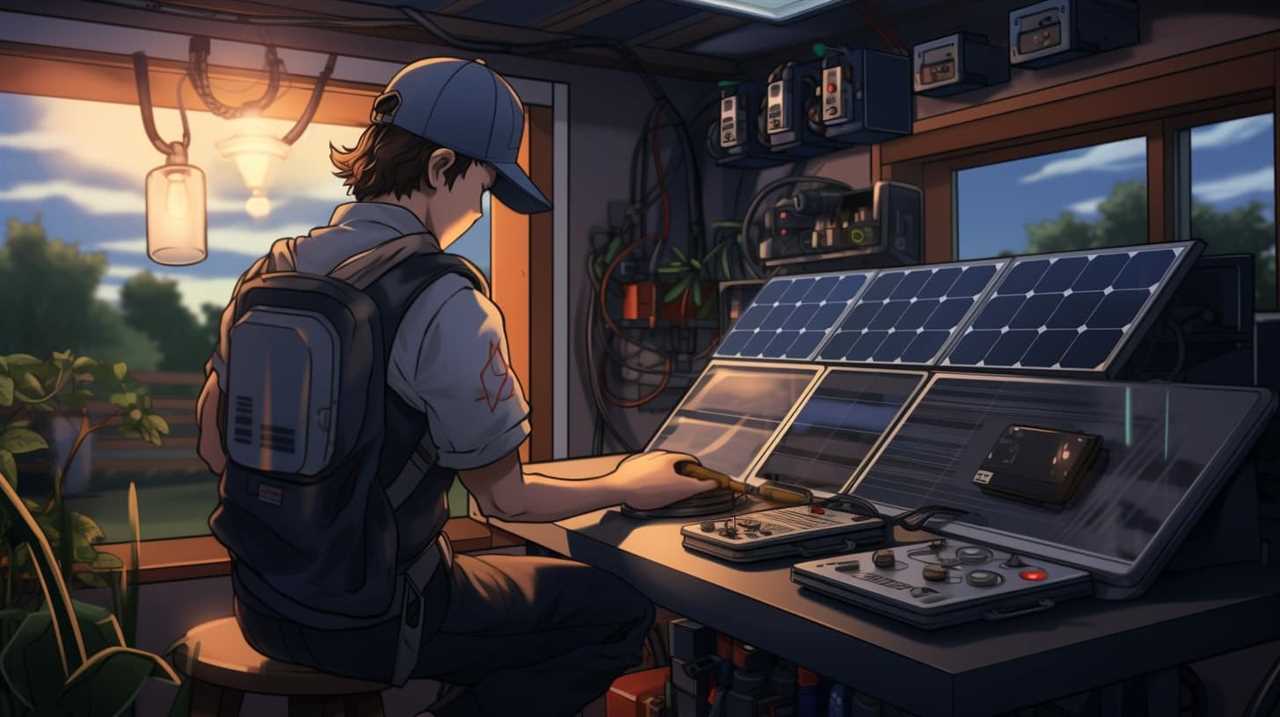
Budget-Friendly Building Materials: Options That Won’t Break the Bank
When it comes to building a tiny house on a budget, it’s important to explore affordable alternatives and cost-effective solutions for building materials.
One option to consider is using recycled or reclaimed materials. These materials can often be obtained for free or at a low cost, making them an excellent choice for those looking to save money.
Another cost-effective solution is using plywood or oriented strand board (OSB) for the walls and floors. These materials are cheaper than traditional lumber but still offer sufficient strength and durability.
Additionally, using vinyl or laminate flooring instead of hardwood can significantly reduce costs without compromising on aesthetics.
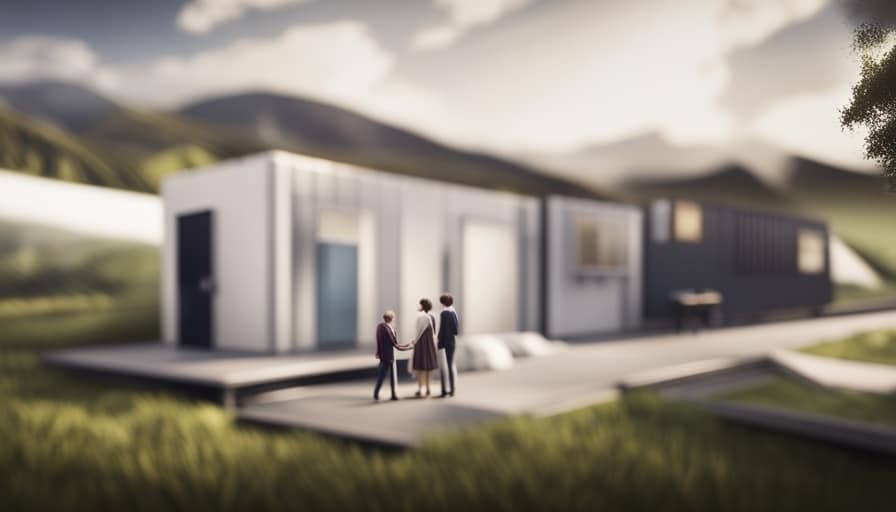
Finally, considering alternative insulation options such as spray foam or cellulose can provide excellent thermal performance at a lower price.
DIY Vs. Hiring Contractors: Which Route Saves You More Money
Hiring contractors or doing it yourself: which option saves you more money? When it comes to building a tiny house, the decision between DIY and hiring professionals can have a significant impact on your expenses. Let’s explore the cost comparisons and potential savings of each route.
DIY projects can initially seem more affordable, as you won’t have to pay for labor costs. However, it’s crucial to consider your own skills and experience. Building a tiny house requires knowledge in various trades, such as carpentry, plumbing, and electrical work. If you lack expertise in these areas, mistakes can be costly and time-consuming to fix.
On the other hand, hiring professionals can ensure a higher level of craftsmanship and efficiency. Although their services come with a price tag, their expertise can potentially save you money in the long run. Professionals have access to specialized tools, industry connections, and the ability to complete tasks quickly and accurately.

Before making a decision, it’s essential to weigh the cost of your time and potential errors against the expense of hiring professionals. Assess your skills honestly and consider consulting with experts to determine the best route for your tiny house project.
Creative Cost-Cutting Strategies: Tips and Tricks for Building on a Shoestring Budget
One of the best ways to save money when building a tiny house is by getting creative with cost-cutting strategies. Here are a few tips and tricks to help you build your tiny house on a shoestring budget:
-
Upcycling Materials: Instead of buying new materials, consider using reclaimed or salvaged items. This not only saves money but also reduces waste and gives your tiny house a unique character.
-
Bartering Services: Trade your skills or services with others who’ve the expertise you need. For example, you could offer to do landscaping work in exchange for electrical or plumbing work.

-
Using Recycled Materials: Look for materials that have been recycled or repurposed, such as reclaimed wood or recycled insulation. These materials are often cheaper and more environmentally friendly.
-
DIY Approach: Take on as much of the construction work as you can yourself. This will save you money on labor costs and give you a sense of pride and ownership in your tiny house.
-
Plan and Budget Carefully: Before you start building, create a detailed plan and budget. This will help you prioritize your expenses and avoid unnecessary costs.
Hidden Expenses to Consider: Factors That Could Impact the Affordability of Your Tiny House Build
Considering the potential for unexpected costs is essential when building a tiny house, as they can greatly impact the affordability of the project. Hidden fees and unexpected costs can quickly add up and strain your budget. It’s important to thoroughly research and plan for these expenses to avoid any financial surprises along the way.

One common hidden fee is the cost of permits, which vary depending on your location and can range from a few hundred to a few thousand dollars. Additionally, utility connections, such as water and electricity, may require installation fees that you mightn’t have initially considered.
Other unexpected costs can include the need for specialized tools or equipment, hiring professionals for certain tasks, or unforeseen repairs or modifications. By being aware of these potential expenses, you can better budget and ensure the affordability of your tiny house build.
Frequently Asked Questions
What Are the Legal Requirements for Building a Tiny House in My Area?
When considering building a tiny house, it’s important to research and understand the local zoning regulations and any size restrictions that may apply in your area. This will ensure compliance with the law and a smooth building process.
How Much Does It Cost to Hire a Professional Architect to Design a Tiny House?
Hiring a professional architect for tiny house design can be costly, but it offers benefits like expertise and customized plans. However, if cost is a concern, DIY construction can be a more affordable option.
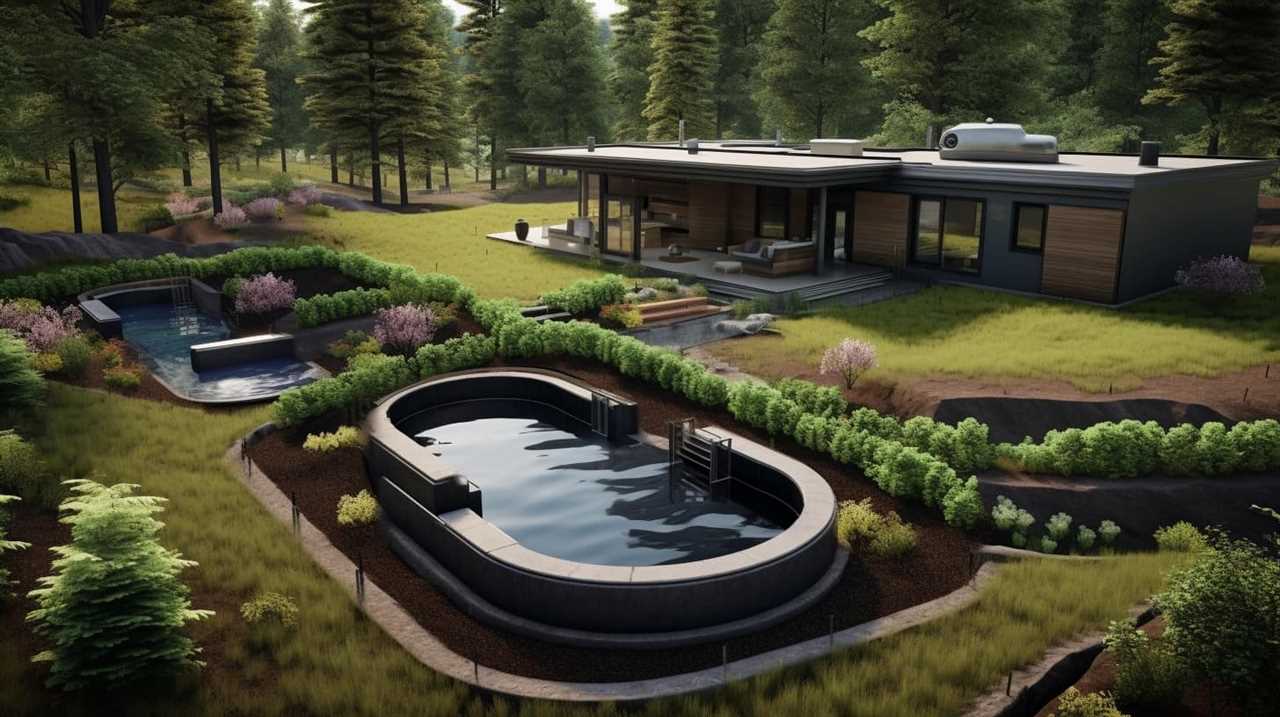
Are There Any Additional Costs for Connecting a Tiny House to Utilities Such as Water, Electricity, and Sewage?
Connecting a tiny house to utilities such as water, electricity, and sewage can incur additional costs. Plumbing and electrical expenses, along with permit fees, must be considered. Building on a tight budget presents challenges like sourcing affordable materials and finding suitable land for parking.
What Are Some Common Challenges or Setbacks That People Face When Building a Tiny House on a Tight Budget?
When building a tiny house on a tight budget, challenges and setbacks are common. It’s important to carefully plan and budget for unexpected expenses. Being resourceful and creative can help overcome these obstacles.
Are There Any Specific Permits or Licenses Required for Parking a Tiny House on a Piece of Land or in a Specific Neighborhood?
Permits, restrictions, and zoning are essential when considering the location and neighborhood compatibility of parking a tiny house. Land use regulations, parking requirements, and local ordinances should be thoroughly researched to ensure compliance with legal considerations.
Conclusion
In conclusion, building a tiny house can be a cost-effective option for those looking to downsize and reduce their expenses. By understanding the costs involved, choosing budget-friendly materials, and considering DIY options, individuals can save money while still creating a comfortable and functional living space.

However, it’s important to be mindful of hidden expenses that may arise during the building process. With careful planning and creative cost-cutting strategies, constructing a tiny house can be an affordable and rewarding endeavor.
I’m Theodore, and I love tiny houses. In fact, I’m the author of Tiny House 43, a book about tiny houses that are also tree houses. I think they’re magical places where imaginations can run wild and adventures are just waiting to happen.
While tree houses are often associated with childhood, they can be the perfect adult retreat. They offer a cozy space to relax and unwind, surrounded by nature. And since they’re typically built on stilts or raised platforms, they offer stunning views that traditional homes simply can’t match.
If you’re looking for a unique and romantic getaway, a tree house tiny house might just be the perfect option.
-

 Beginners Guides2 months ago
Beginners Guides2 months agoHow To Buy A Tesla Tiny House
-

 Energy Efficiency2 weeks ago
Energy Efficiency2 weeks agoBest Tiny Homes For Cold Climates
-

 Beginners Guides2 months ago
Beginners Guides2 months agoTiny House Nation Where Are They Now Stephanie
-

 Tiny House Resources (e.g., legalities, cost, insurance, FAQs)4 weeks ago
Tiny House Resources (e.g., legalities, cost, insurance, FAQs)4 weeks agoDo Tiny Homes Need Planning Permission?
-

 Beginners Guides2 months ago
Beginners Guides2 months agoFrom The Show Tiny House Nation How Many Keep Their Tiny House?
-

 Beginners Guides4 weeks ago
Beginners Guides4 weeks agoUsing a Climbing Net For Treehouse Construction
-

 Beginners Guides4 weeks ago
Beginners Guides4 weeks agoHow to Build a Treehouse Without Drilling Into the Tree
-

 Beginners Guides2 months ago
Beginners Guides2 months agoTiny House Nation Who Pays For The Houses




